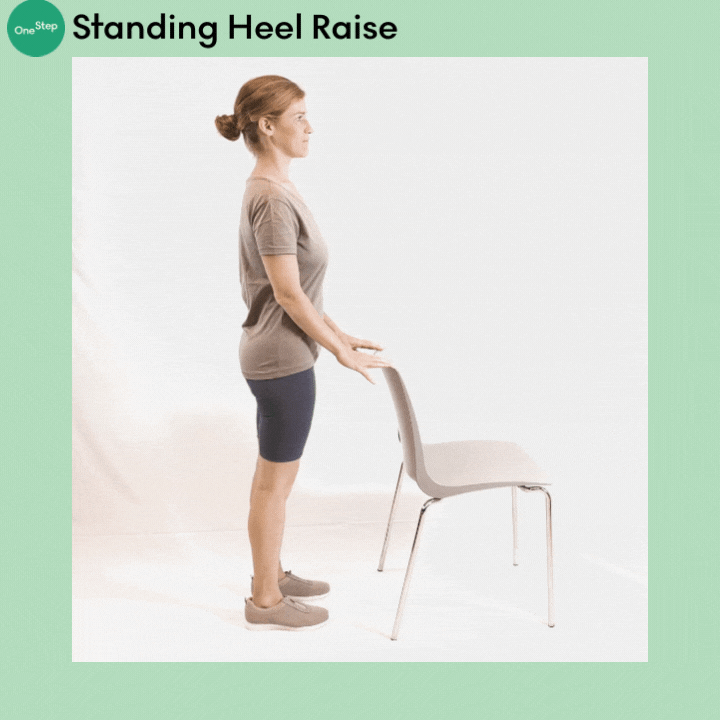
Experiencing foot or heel pain is extremely common and can become severe enough that it stops you in your tracks. While plantar fasciitis often gets all the credit, it is only one cause of heel pain and the name itself is a bit misleading as to the actual cause of foot pain. Likewise, many people are misdiagnosed with plantar fasciitis when the root of their foot pain stems from something else entirely. In this article, we will go over plantar fasciitis along with multiple other causes of foot and heel pain.
The plantar fascia is a band of tissue that runs from your heel to your toes and serves to support the arch of the foot while absorbing shock during weight-bearing. Typically when you see the suffix “-itis,” this means there is inflammation. Contrary to the name, plantar fasciitis, studies have shown there is not always true inflammation present. Likewise, not every source of foot pain comes from the plantar fascia itself.
.jpeg)
Symptoms of plantar fasciitis include pain that worsens after prolonged sitting or with the first step you take in the morning. It can also appear as a sharp pain in the arch of the foot or pain that is located at the heel. Risk factors of developing plantar fasciitis include obesity, prolonged standing, improper footwear, muscle overuse, tight calves, and ankle instability or impaired mobility. Additionally, people who have flat arches, excessively high arches, or an abnormal walking pattern are more likely to experience extra stress on the plantar fascia and foot structures which results in irritation and pain. Plantar fasciitis is typically treated with stretching, exercise, foot orthotics or heel cups, better footwear, massage, and ice.
Heel spurs are bony structures that develop on the bottom of the heel. Excess calcium deposits at the bottom of the heel, causing the bony growth to form, typically in response to strain or tearing of the tissues within the foot. Heel spurs often occur in conjunction with plantar fasciitis, but it is important to note that not all people with heel spurs will experience foot pain. For those who experience pain, symptoms are similar to those with plantar fasciitis as the protruding bony spur causes irritation to the surrounding structures – including the plantar fascia.
The development of a heel spur may be associated with other conditions such as osteoarthritis and ankylosing spondylitis as well as with overuse, obesity, repetitive activities such as running or jumping, and improper footwear. In order for an official diagnosis to be made, imaging of the foot is done to confirm the presence of the boney spur.
Bone spurs are usually treated similarly to plantar fasciitis. While treatments will not get rid of the bone spur, they will address the symptoms and most people respond well. It is very rare to require surgical intervention for bone spurs.
The posterior tibialis muscle runs along the inside of the ankle and down underneath the bottom of the foot, supporting the arch of the foot. When this muscle is weak, the arch of the foot may collapse, resulting in altered mechanics and positioning of the foot itself to a more “flat foot” position, called overpronation.
.jpeg)
Symptoms include pain along the inside of the foot and ankle, pain that is worse with activities such as running or walking, and pain on the outside of the ankle due to the change in foot positioning. Treatment typically involves exercises to strengthen the posterior tibialis muscle, foot orthotics, temporary rest from aggravating activities, icing, and medication to mitigate inflammation.
The Achilles tendon attaches to the back of the heel, connecting the calf muscle to the foot. Overuse of this muscle group – particularly during explosive movements, running on soft surfaces such as sand, and plyometrics – can result in irritation and inflammation of the tendon and pain where it attaches to the heel.
Symptoms include pain that worsens with physical activity, tenderness over the Achilles tendon that gets worse when you draw your toes towards the shin, and warmth or swelling at the heel. Treatment includes foot orthotics or heel wedges to reduce stress on the tendon, medication and icing to decrease swelling, stretching of the calf muscles and gradual strengthening exercises.
Over your heel, there is a protective pad of fat that serves to absorb shock and protect the bony structures during weight-bearing. The natural changes of aging and repetitive trauma from excessive force to the area can cause the fat pad to atrophy, or lose its ability to provide cushioning.
For people suffering from this condition, symptoms typically include pain when wearing high heel shoes, prolonged standing, or standing on hard surfaces. Treatment mainly includes proper fitting shoes, customized orthotics that add cushion or heel cups, and wearing socks with extra padding.
While treatment will vary based on the specific diagnosis, there is some overlap in treating the various types of plantar heel pain that your physical therapist will likely include to some extent.
It’s important to consult with a professional when choosing a foot orthotic. Your physical therapist can help you identify proper fitting shoes and connect you with the right professional for a customized foot orthotic should they see fit.
Stretching tight calf muscles and performing exercises to improve your ankle mobility is a key component of treating most foot and heel pain.

There are various exercises to strengthen your foot muscles that aid in balance and proper mechanics. Standing heel raises and foot doming are two popular exercises used to strengthen the feet and ankles. For a detailed description of foot doming, see our article Reduce foot pain and improve your arch support with foot doming exercises!

Self-massage can be a great way to relieve foot pain and relax tight tissues. You can opt to use your hands or roll a ball under your foot in a seated position.
Stick a water bottle in your freezer for the perfect way to perform an ice massage on irritated feet. Simply place the bottle under your foot in a seated position and roll for relief.
Perhaps the best treatment of all is to be proactive and prevent plantar heel pain from developing. Some ways to prevent pain include wearing proper footwear, performing adequate warm-up before physical activity, following a stretching and strengthening program that includes your feet, and maintaining a healthy weight.
Are you experiencing a pesky plantar pain you can’t get rid of? Looking to be proactive or receive a diagnosis? Download the OneStep Digital Physical Therapy app to be connected with a licensed PT today to get started!
References
Allam AE, Chang KV. Plantar Heel Pain. In: StatPearls [Internet]. Treasure Island (FL): StatPearls Publishing: updated November 21, 2021. Accessed March 28, 2022.
Plantar Fasciitis. OrthoInfo from the American Academy of Orthopedic Surgeons. Published 2019. Accessed March 28, 2022.
Plantar Fasciitis. Mayo Clinic. Updated January 20, 2022. Accessed March 28, 2022.
Agyekum EK, Ma K. Heel pain: a systematic review. Chinese Journal of Traumatology. 2015;18(3): 164-169.